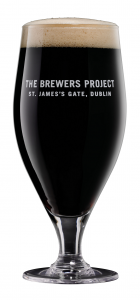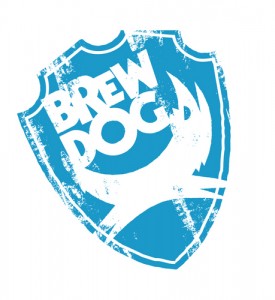 Everyone likes Guinness, even the people who don’t like Guinness. Why’s that then Rich? Marketing! Oh, and a good product and factual story to back it up.
Everyone likes Guinness, even the people who don’t like Guinness. Why’s that then Rich? Marketing! Oh, and a good product and factual story to back it up.
Marketing can be seen as a dirty word but done well, everyone’s a winner with one proviso – the marketing needs be backed up by the product, without that it is just ‘puff’. For years the advertisements have been both contemporary and legendary (Ed: Can you be contemporary and legendary at the same time? Rich: Semantics, you know what I mean.) There must be a Guinness pump in over 90% of the pubs in the UK, saturation point? No, some Genius comes up with the idea of serving an identical product two degrees colder. This gave Guinness the chance to double brand awareness at a stroke. (If you don’t believe in the subliminal effect of brand awareness look around you next time you are in a Brewdog bar, count the Brewdog logos, count the other logos you can see.)
Bitter (style, not attitude)drinkers who wouldn’t touch a pint of ‘nitrokeg’ or ‘creamflow’ bitter will often drink Guinness happily as a fallback such is the affection for the brand. People who don’t drink Guinness still like the brand. Only a smidgin of this love can be attributed to the UK’s fondness for some softly spoken, self-deprecating Irish blarney.
I have had the unalloyed good fortune to be the recipient of Guinness hospitality recently. On the first occasion this was as part of the European Beer Bloggers Conference (my advice – start a blog, attend, you won’t regret it). This included a sneak look at their big, shiny, new brewhouse (the fourth brewhouse they have built at St James’ Gate) followed by a reception at the Storehouse, the most prominent building on the site, with panoramic views over Dublin. Now you expect a professional presentation and a bit of free Guinness, right? This was so much more. All versions of Guinness including the two different export, higher strength versions were on offer together with some other beers and most interestingly, Night Porter. This was the winner of an internal brewing competition, a lovely chocolatey, tarry mouthful for a relatively modest 5.5% ABV. I always mention this because I would just love them to commercialise it. I digress, each stout was matched to a different food station – oysters naturally but lots of other good stuff. Apart from the quality of the beer and food, the most impressive thing were the staff. All were knowledgeable and informed, keen to talk about the product but not in any sort of pushy way. This doesn’t happen by accident, it is the result of excellent training and employees buying into the ethos of the company.
Then, a few days ago, I was invited to a Guinness event of ‘discovery’ at a ‘secret location’. My arm didn’t need twisting. Again, I was expecting a nice evening but was unprepared for how good (and exclusive) it was. I won’t make you green by describing the evening, let’s concentrate on the facts. It was to launch their new West Indies Porter and Dublin Porter, presented by the brewer and the archivist. There were some shadowy suits and little black dresses that indicated marketing people in the background but it turned out they didn’t bite and were indeed, without exception, quite charming.
 These two new beers are based on old recipes, recreated as best they are able, from the archives. Sample problem, how big is a bale? From the brewing side this has been labelled ‘The Brewers Project’ and gives the brewers, technically skilled at producing consistent, large volume stout a chance to do some more interesting stuff than the day-to-day routine. All very well, but just another beer to market? No, all the Guinness marketing Genius is here. This is the brewer with the biggest heritage in the British Isles but it’s something they have cashed in on before. The style is one that was incredibly popular, witness the archives, yet is under represented in pubs nowadays. Pubs that are committed to a regular range of bitters might have no problem putting a porter alongside and it’s not a stout. Well, cynics might say it is ‘stout lite’ but when Guinness pull this type of stunt we just smile indulgently. And the markets they are aiming for don’t compete with their existing ones. Nice old labelling. It all comes together into a great marketing package – based on facts and real stories.
These two new beers are based on old recipes, recreated as best they are able, from the archives. Sample problem, how big is a bale? From the brewing side this has been labelled ‘The Brewers Project’ and gives the brewers, technically skilled at producing consistent, large volume stout a chance to do some more interesting stuff than the day-to-day routine. All very well, but just another beer to market? No, all the Guinness marketing Genius is here. This is the brewer with the biggest heritage in the British Isles but it’s something they have cashed in on before. The style is one that was incredibly popular, witness the archives, yet is under represented in pubs nowadays. Pubs that are committed to a regular range of bitters might have no problem putting a porter alongside and it’s not a stout. Well, cynics might say it is ‘stout lite’ but when Guinness pull this type of stunt we just smile indulgently. And the markets they are aiming for don’t compete with their existing ones. Nice old labelling. It all comes together into a great marketing package – based on facts and real stories.
Diageo, owners of Guinness are primarily a spirits company. Kilkenny, Smithwicks and Harp complement Guinness in Ireland and North America. In Africa they have some local lagers to complement the famous Foreign Extra. However they have not dipped their toes in the murky waters of ‘craft beer’ either by acquisition or pilot brewery before. Wisely the word craft doesn’t appear here either, it’s about heritage, a far more tangible label. Nevertheless this is just a tiptoe into some markets where Guinness might not have been seen before.
So very neatly Guinness have avoided confrontation with best bitter or modern IPA. They haven’t engaged in the craft vs cask war. They haven’t gone for anything ‘new’. Competition for these new beers is relatively low in a market that is becoming increasingly saturated.
This has been rather gushing, hasn’t it? It is for the marketing. Guinness could be used as a textbook (also for exporting, but that’s another story). Sadly I am too much of a thrill seeker to drink a lot of Guinness nowadays but I love what they do.
A review of the actual beers is here.
In the meantime, a useless fact: My favourite time and place for a pint of Guinness is the open air, but covered bar underneath the Gold Cup restaurant at Cheltenham racecourse on Champion Hurdle day prior to racing. Watch the excited crowds stream in for the first day of the Festival, read the Racing Post, feel the anticipation of the winners and enjoy a pint of the black stuff – bliss.
 Probably not, the ultra-slick commercial juggernaut that is BrewDog will continue to make more and more money. Oh sorry, you mean its latest marketing gimmick, I mean beer, Born To Die.
Probably not, the ultra-slick commercial juggernaut that is BrewDog will continue to make more and more money. Oh sorry, you mean its latest marketing gimmick, I mean beer, Born To Die.

![GUINNESS GOLDEN ALE BOTTLE [HI] half](http://intoxicated.me.uk/wp-content/uploads/2015/03/GUINNESS-GOLDEN-ALE-BOTTLE-HI-half-134x300.jpg)

